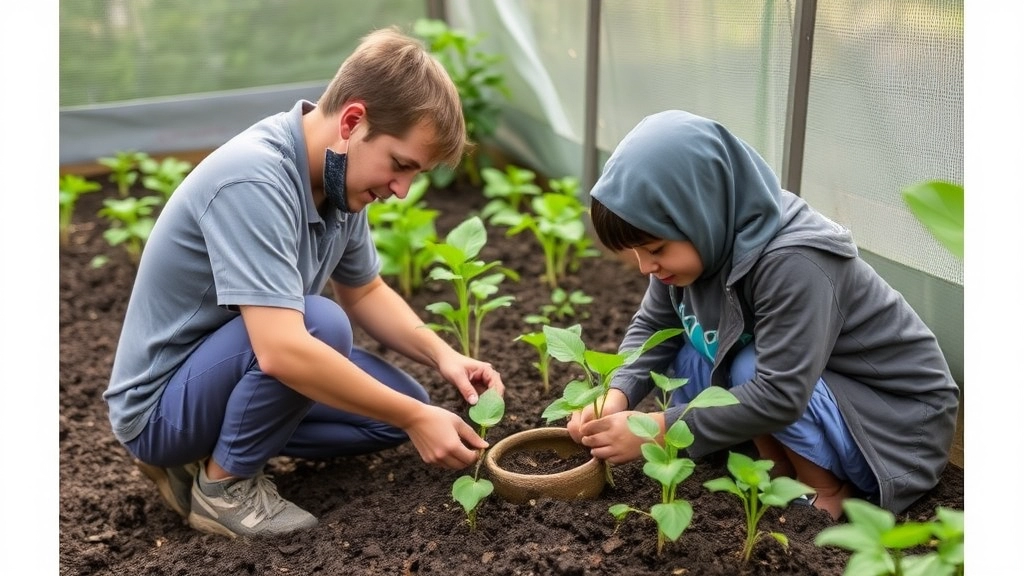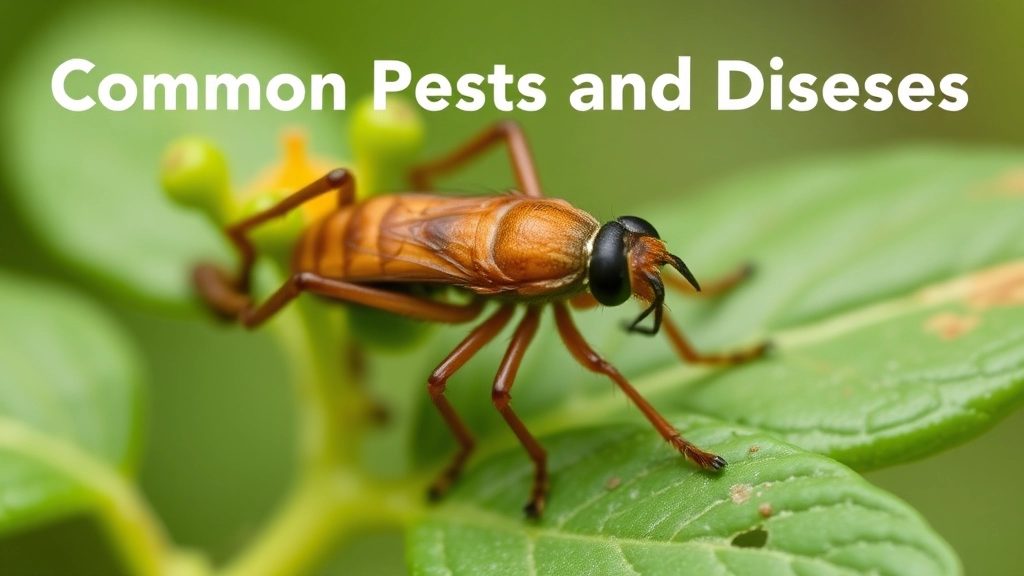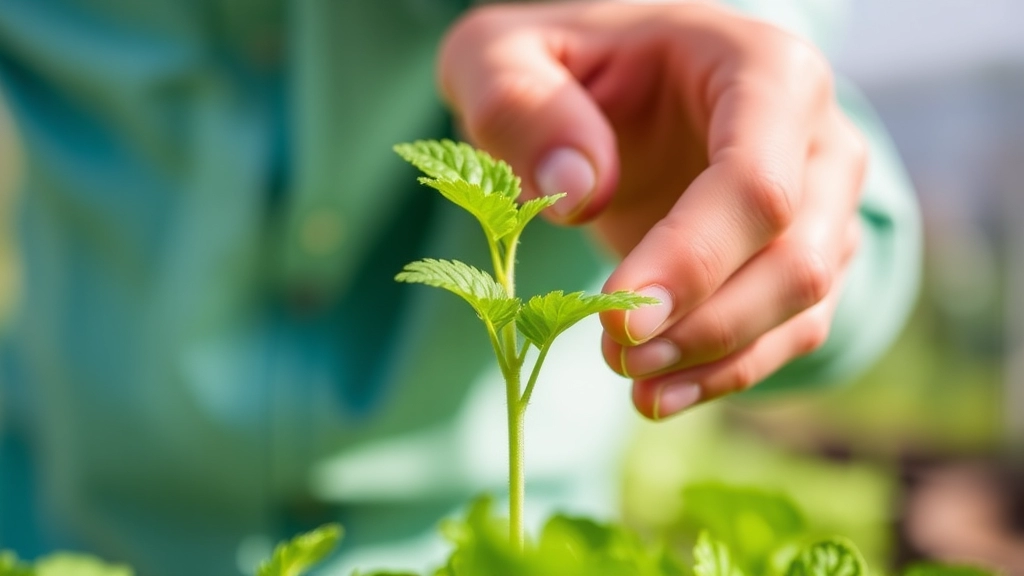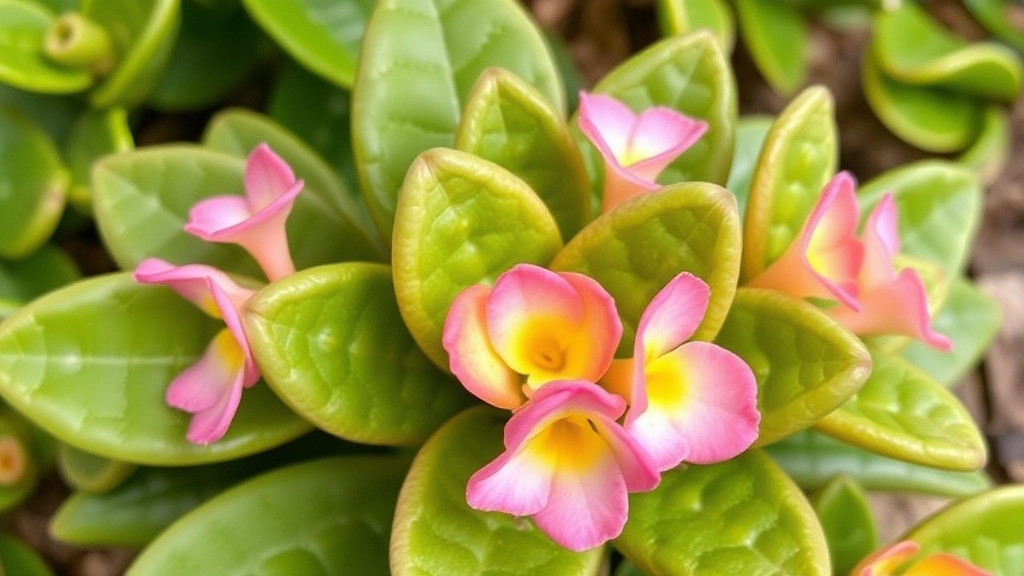Welcome to the fascinating world of Kalanchoe figuereidoi
A hidden gem among succulents that’s about to become your new plant obsession. As a passionate plant enthusiast, I’m thrilled to take you on a journey exploring this unique Madagascar native that combines beauty, resilience, and low-maintenance care in one compact package.
Comprehensive Guide
In this comprehensive guide, we’ll uncover everything you need to know about Kalanchoe figuereidoi – from its distinctive scalloped leaves and vibrant blooms to expert tips on cultivation and propagation. Whether you’re a seasoned succulent collector or a curious beginner, get ready to discover why this drought-resistant beauty deserves a prime spot in your garden or home.
Let’s Dive In
Unlock the secrets of successfully growing and caring for this captivating plant!
Overview of Kalanchoe figuereidoi
Let’s dive into the world of Kalanchoe figuereidoi, shall we?
This succulent’s a bit of a mystery, even to plant nerds like me.
First off, it’s part of the Kalanchoe family – you know, those tough-as-nails plants that thrive on neglect.
But Kalanchoe figuereidoi? It’s the cool cousin that not many people know about.
Here’s the deal: it’s native to Madagascar, like a lot of its relatives.
Think of it as the plant world’s hidden gem.
It’s got this unique look that’ll make your garden stand out.
But here’s the kicker – it’s not just pretty. It’s practical too.
Drought-resistant? Check. Low maintenance? Double check.
Perfect for those of us who love plants but can’t seem to keep them alive.
Now, I’m not saying it’s indestructible. But it’s pretty darn close.
So, if you’re looking to add some flair to your plant collection, Kalanchoe figuereidoi might just be your new best friend.
Trust me, once you get to know this plant, you’ll wonder how you ever lived without it.
Physical Characteristics

Alright, let’s dive into what makes Kalanchoe figuereidoi stand out in the succulent crowd. Trust me, this plant’s got some serious swagger.
Size and Shape
First off, this little beauty typically grows to about 30-40 cm tall. It’s not gonna take over your living room, but it’s got enough presence to make a statement. The plant forms a compact, bushy structure that’s perfect for those of us who love a tidy-looking succulent.
Leaves
Now, the leaves are where things get interesting. They’re:
- Thick and fleshy (classic succulent style)
- Oval to oblong in shape
- Arranged in opposite pairs along the stems
But here’s the kicker – the edges of these leaves are what really catch your eye. They’ve got this cool scalloped or crenate pattern that gives the plant a unique, almost decorative look. It’s like nature’s own little art project.
Flowers
When it comes to blooming, Kalanchoe figuereidoi doesn’t disappoint:
- Flowers appear in clusters at the end of tall stalks
- They’re typically a vibrant yellow or orange
- The blooms are small but numerous, creating a showy display
I’ve seen these flowers light up a room like mini fireworks. It’s a real mood-lifter, especially during those gloomy winter months. If you’re looking for a similar burst of color, you might want to check out the yellow Kalanchoe blossfeldiana, which is known for its bright blooms.
Stem
The stems are sturdy and slightly woody as the plant matures. This gives it a bit of a shrub-like appearance, which is pretty cool for a succulent. It’s like it can’t decide if it wants to be a houseplant or a mini tree.
Root System
Underground, Kalanchoe figuereidoi develops a fibrous root system. It’s not too deep or aggressive, which is great news for container growers. You won’t need to worry about it busting out of its pot like some kind of green Houdini.
In a nutshell, Kalanchoe figuereidoi is a compact, eye-catching succulent with unique leaf edges and cheerful flowers. It’s got just the right mix of interesting features without being high-maintenance. Perfect for adding a touch of green charm to your space without turning plant care into a full-time job. If you’re interested in exploring other unique Kalanchoe varieties, you might want to take a look at the Kalanchoe tomentosa varieties, which offer a different but equally fascinating aesthetic.
Natural Habitat and Distribution
Alright, let’s dive into the natural habitat and distribution of Kalanchoe figuereidoi. Here’s the scoop:
Where does this plant call home?
Kalanchoe figuereidoi is native to Madagascar. No surprises there, right?
But here’s the thing:
It’s not spread all over the island. Nope, it’s pretty picky.
You’ll find it mainly in the central and western parts of Madagascar.
Why these areas? Well, they’ve got the perfect mix of conditions:
- Dry, rocky terrain
- Plenty of sunshine
- Not too much rainfall
These succulents are tough cookies. They’ve adapted to survive in some pretty harsh spots.
Think cliff faces, rocky outcrops, and areas with thin soil.
But here’s the kicker:
They’re not just hanging out in the wild anymore.
Thanks to plant enthusiasts and collectors, you can now find Kalanchoe figuereidoi in gardens and homes worldwide.
Just remember:
If you’re growing it outside its natural habitat, you’ll need to mimic those Madagascar conditions.
Got a sunny spot with well-draining soil? You’re halfway there!
So, whether you’re in Madagascar or Manchester, you can give this plant a happy home.
Just think “dry and bright” and you’ll be on the right track.
Growing Conditions and Care

Listen up, folks! If you’re keen on growing Kalanchoe figuereidoi, you’ve gotta nail the basics. Trust me, I’ve been there, and I’m gonna spill the tea on how to keep these succulents thriving.
Light and Temperature
First things first, these bad boys love the sun. But here’s the kicker:
- Full sun? Nah, too harsh.
- Partial shade? Bingo!
Aim for bright, indirect light. Think morning sun or filtered light throughout the day. As for temp, they’re not too fussy:
- Ideal range: 15-24°C (59-75°F)
- Can handle a bit cooler, but watch out for frost!
Soil and Watering
Now, let’s talk dirt:
- Well-draining soil is your best mate
- Mix regular potting soil with sand or perlite
- Cactus mix? That’ll do the trick too
Watering’s where most people mess up. Here’s the deal:
- Let the soil dry out between waterings
- Overwatering? That’s a one-way ticket to root rot city
Fertiliser and Pruning
Feeding time! But easy does it:
- Use a balanced, water-soluble fertiliser
- Feed during growing season (spring and summer)
- Dilute to half strength â these guys aren’t big eaters
Pruning’s a breeze:
- Snip off dead or yellowing leaves
- Trim leggy growth to keep ’em compact
- Use clean, sharp scissors to avoid infections
Humidity and Air Circulation
Here’s where it gets interesting:
- Kalanchoe figuereidoi isn’t fussy about humidity
- But good air circulation? That’s non-negotiable
Pro tip: Pop ’em near a window that opens, or use a small fan if you’re growing indoors.
Repotting
Last but not least, let’s talk repotting:
- Every 2-3 years should do the trick
- Choose a pot one size up
- Spring’s the best time to make the move
Remember, growing Kalanchoe figuereidoi isn’t rocket science. Get these basics right, and you’ll be laughing. Keep an eye on your plants, adjust as needed, and don’t be afraid to experiment a bit. That’s how you’ll become a pro at growing these beauties! If you’re interested in other Kalanchoe varieties, check out the Kalanchoe tomentosa varieties for some fuzzy-leaved options. And for those looking to expand their Kalanchoe collection, the Kalanchoe blossfeldiana is a popular choice known for its vibrant flowers.
Propagation Methods
Let’s talk about how to make more Kalanchoe figuereidoi plants. It’s easier than you might think!
Leaf Cuttings
The easiest way? Leaf cuttings. Here’s how:
- Snip a healthy leaf
- Let it dry for a day or two
- Pop it on some well-draining soil
- Wait for roots to grow
Stem Cuttings
Want faster results? Try stem cuttings:
- Cut a 4-inch stem
- Remove lower leaves
- Let it callous over
- Plant in soil
- Keep it moist
Seeds
Feeling patient? Go for seeds:
- Sow on top of soil
- Don’t cover them
- Keep warm and slightly damp
- Wait for germination (2-3 weeks)
Division
Got a big plant? Division’s your friend:
- Carefully remove from pot
- Separate roots
- Replant each section
Remember, Kalanchoe figuereidoi likes it warm and bright. Give it that, and you’ll have new plants in no time.
Quick tip: Spring and summer are best for propagation. The plant’s in growth mode then.
Got questions about propagating Kalanchoe figuereidoi? Just ask. It’s a fun process once you get the hang of it!
Common Pests and Diseases

Let’s chat about the nasty critters and annoying issues that can mess with your Kalanchoe figuereidoi. Trust me, I’ve been there, and it’s not fun. But don’t worry, I’ve got your back.
Pesky Pests
First up, we’ve got those tiny troublemakers:
- Mealybugs: These little cotton-ball lookalikes love to suck the life out of your plant. Literally.
- Spider mites: Barely visible, but they can do some serious damage if left unchecked.
- Aphids: Small, but they multiply like crazy and can weaken your plant in no time.
I remember when I first spotted mealybugs on my Kalanchoe. I freaked out, thinking my plant was a goner. But here’s a quick fix: dab them with a cotton swab soaked in rubbing alcohol. Works like a charm!
Dodgy Diseases
Now, let’s talk about the not-so-fun stuff that can make your Kalanchoe figuereidoi feel under the weather:
- Root rot: This is a biggie. Overwatering is usually the culprit.
- Powdery mildew: Looks like someone sprinkled flour on your plant. Not cool.
- Leaf spot: Brown or black spots on the leaves. Yep, as annoying as it sounds.
I once nearly lost a Kalanchoe blossfeldiana to root rot. Lesson learned: always check the soil before watering. If it’s still damp, hold off.
Prevention is Key
Here’s the deal: keeping your Kalanchoe figuereidoi healthy is your best defence. It’s like hitting the gym for your plant. A strong, well-cared-for plant can fight off most pests and diseases on its own.
- Give it enough light, but not too much direct sun.
- Water only when the soil is dry. Seriously, feel it first.
- Make sure it’s got good air circulation. No stuffy corners!
Remember, spotting problems early is crucial. Keep an eye on your Kalanchoe figuereidoi, and you’ll catch any issues before they become major headaches. Trust me, your plant will thank you for it. If you’re interested in learning more about different Kalanchoe varieties, check out the Kalanchoe tomentosa ‘Teddy Bear’ for a unique and fuzzy addition to your collection.
Benefits and Uses of Kalanchoe figuereidoi
Ever wondered what this funky little plant can do for you? Let’s dive in.
Kalanchoe figuereidoi isn’t just a pretty face in your garden.
It’s got some tricks up its leaves that might surprise you.
First off, it’s a champ at purifying the air.
Stick one of these in your room, and you’re breathing easier already.
But wait, there’s more!
Medicinal Magic:
- Some folks use it for minor cuts and burns
- It’s got properties that might help with inflammation
- Traditional medicine sometimes uses it for headaches
Decorative Dynamo:
- Adds a pop of colour to any space
- Perfect for rock gardens or hanging baskets
- Makes a great conversation starter at parties
Low-Maintenance Mate:
- Ideal for busy people or forgetful waterers
- Survives neglect better than your average houseplant
- Keeps looking good with minimal fuss
Stress-Buster:
- Gardening with this plant can be seriously zen
- Watching it grow gives you a sense of achievement
- Its presence can boost your mood and productivity
Gift-Giving Gold:
- Easy to propagate, so you can share the love
- Unique enough to impress plant enthusiasts
- Hardy enough to survive even the most clueless gift recipient
So, whether you’re after health benefits, home decor, or just an easy-care companion, Kalanchoe figuereidoi’s got you covered.
It’s not just a plant; it’s a multi-tasking marvel.
Tips for Successful Cultivation

Alright, let’s dive into some killer tips for growing Kalanchoe figuereidoi like a pro. I’ve been tinkering with these plants for years, and I’m pumped to share what I’ve learned.
First things first: Light is your best mate
These succulents are sun-lovers, but they’re not fans of getting scorched. Here’s the deal:
- Aim for bright, indirect light
- A few hours of morning sun? Perfect
- Afternoon sun? Might be too harsh, so watch out
Pro tip: If your plant’s leaves start looking pale or stretched, it’s begging for more light. Move it closer to a window, but do it gradually to avoid shock.
Soil and drainage: Don’t mess this up
Kalanchoe figuereidoi hates wet feet. Trust me, I learned this the hard way. Here’s what you need:
- Well-draining soil mix (cactus mix works great)
- Add some perlite or coarse sand for extra drainage
- Use a pot with drainage holes â non-negotiable!
Watering: Less is more
Overwatering is the number one killer of these beauties. Here’s my foolproof method:
- Wait until the soil is completely dry
- Water thoroughly
- Let all excess water drain out
- Repeat step 1
During winter, cut back on watering even more. These plants are tough cookies and can handle a bit of drought.
Temperature and humidity: Keep it comfy
Kalanchoe figuereidoi isn’t too fussy, but it does have some preferences:
- Ideal temp range: 15-24°C (60-75°F)
- Can handle brief periods below 10°C (50°F), but don’t push it
- Average room humidity is fine
Fertiliser: A little goes a long way
These plants aren’t heavy feeders, but a bit of nutrition helps:
- Use a balanced, water-soluble fertiliser
- Feed once a month during growing season
- Skip fertilising in winter
Pruning: Shape it up
Regular pruning keeps your Kalanchoe figuereidoi looking sharp:
- Remove dead or yellowing leaves
- Pinch off leggy growth to encourage bushiness
- Don’t be afraid to give it a good haircut if it gets too unruly
Remember, growing Kalanchoe figuereidoi is all about finding the right balance. Pay attention to your plant, and it’ll tell you what it needs. With these tips in your back pocket, you’re well on your way to becoming a Kalanchoe tomentosa varieties whisperer. Happy growing! If you’re interested in exploring more unique Kalanchoe species, check out the Kalanchoe beauverdii for its distinctive features.
Frequently Asked Questions
Let’s dive into some burning questions about Kalanchoe figuereidoi. I’ve been growing these beauties for years, and trust me, I’ve heard it all. So, let’s cut through the noise and get to the good stuff.
Q: How often should I water my Kalanchoe figuereidoi?
A: Here’s the deal: these succulents are tough cookies. They’re not fans of soggy soil, so I’d say water them when the top inch of soil feels dry. In summer, that might be once a week. Winter? Maybe every two weeks. Just keep an eye on it, yeah?
Q: Can Kalanchoe figuereidoi survive in low light?
A: Look, they’re sun-lovers at heart. But they’re not divas. They’ll tolerate lower light, but you might see slower growth and fewer flowers. If you want them to really thrive, give ’em bright, indirect light. It’s like giving them a caffeine boost!
Q: Is Kalanchoe figuereidoi toxic to pets?
A: Hate to be the bearer of bad news, but yeah, it’s toxic. Keep it away from curious pets and kids. If ingested, it can cause some nasty stomach issues. Better safe than sorry, right?
Q: How do I propagate Kalanchoe figuereidoi?
A: Easy peasy! Just snip off a healthy leaf or stem cutting, let it callous over for a day or two, then stick it in some well-draining soil. Water lightly, and boom – you’ve got yourself a new plant. It’s like magic, but better.
Q: Why isn’t my Kalanchoe figuereidoi flowering?
A: Ah, the million-dollar question. Could be a few things:
- Not enough light (remember that caffeine boost we talked about?)
- Overwatering (soggy soil = sad plant)
- Wrong season (they typically bloom in late winter to spring)
- Too much fertilizer (easy on the plant food, champ)
Give it time, adjust these factors, and you’ll have a blooming beauty in no time.
Q: Can Kalanchoe figuereidoi be grown outdoors?
A: Sure thing, if you’re in the right climate. They love warm weather and can handle temperatures down to about 10°C (50°F). But if you’re in a frosty area, bring ’em inside when it gets chilly. They’re tough, but not that tough.
Remember, growing Kalanchoe figuereidoi is all about finding that sweet spot. It’s not rocket science, but it does take a bit of trial and error. Keep at it, and you’ll be a pro in no time. Any more questions about Kalanchoe figuereidoi? Fire away!
Frequently Asked Questions about Kalanchoe figuereidoi
Q: How big does Kalanchoe figuereidoi typically grow?
A: Kalanchoe figuereidoi usually reaches a height of 30-40 cm (12-16 inches). It forms a compact, bushy structure that’s perfect for indoor spaces or small garden areas. Remember, proper care and optimal conditions can influence its growth.
Q: What makes Kalanchoe figuereidoi unique among succulents?
A: The standout feature of Kalanchoe figuereidoi is its scalloped or crenate leaf edges. This gives the plant a distinctive, almost decorative appearance that sets it apart from other succulents. Plus, its vibrant yellow or orange flowers add an extra pop of color when in bloom.
Q: Can I grow Kalanchoe figuereidoi in a hanging basket?
A: Absolutely! Kalanchoe figuereidoi’s compact size and cascading growth habit make it an excellent choice for hanging baskets. Just ensure the basket has good drainage and is placed in a spot with bright, indirect light.
Q: How often should I fertilize my Kalanchoe figuereidoi?
A: These plants aren’t heavy feeders. Feed them with a balanced, water-soluble fertilizer once a month during the growing season (spring and summer). Dilute the fertilizer to half strength to avoid overfeeding. In winter, you can skip fertilizing altogether.
Q: Is Kalanchoe figuereidoi drought-resistant?
A: Yes, Kalanchoe figuereidoi is quite drought-resistant, thanks to its succulent nature. It can tolerate periods of drought better than overwatering. However, for optimal growth and health, it’s best to water when the top inch of soil feels dry.
Q: How can I encourage bushier growth in my Kalanchoe figuereidoi?
A: To promote bushier growth, try pinching off the growing tips of your Kalanchoe figuereidoi. This encourages branching and results in a fuller, more compact plant. Regular pruning of leggy growth can also help maintain a bushy appearance.
Q: Are there any common pests I should watch out for?
A: Keep an eye out for mealybugs, spider mites, and aphids. These pests can be a nuisance for Kalanchoe figuereidoi. Regular inspection and prompt treatment with insecticidal soap or neem oil can help keep these pests at bay.
Q: Can Kalanchoe figuereidoi survive winter outdoors?
A: Kalanchoe figuereidoi is not frost-hardy. If you live in an area where temperatures drop below 10°C (50°F), it’s best to bring your plant indoors for the winter. In warmer climates, it can be grown outdoors year-round.

